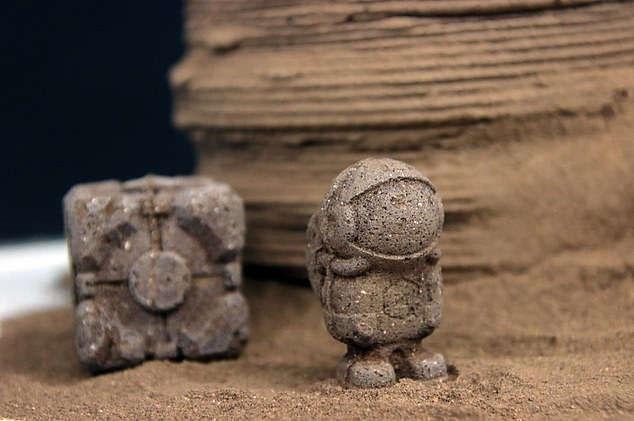Building a house on Mars with concrete made from astronaut blood and sweat
Proteins from astronaut blood can combine with urine, sweat and tears to form a glue-like binder to make AstroCrete concrete on the Moon and Mars.
This idea was put forward by scientists from the University of Manchester, UK, with the goal of solving the problems and costs of sending building materials into space.

Space concrete made with proteins from astronauts' blood combined with other excretory fluids could be used to build on Mars. (Image: University of Manchester).
This glue holds the soil on the Moon and Mars together, creating a material that looks like concrete but is 300% stronger than regular concrete.
The scientists calculated that nearly 500kg of AstroCrete could be produced during the two-year two-year Mars mission with six astronauts.
However, just like on Earth, 91kg concrete needed to build just 0,09m 2 of a single-storey houses. If used in the form of sandbags or composite brick tops, each astronaut can produce enough space concrete to expand the habitat to support an additional astronaut, doubling the residence. after each successive Mars mission.

The cost per brick from Earth to Mars is about $2 million.
The team shared Bio journal Materials Today: "Our calculations show that each astronaut - during a mission on Mars - can generate enough additional space to support life another astronaut, leading to the possibility of allowing a steady expansion of a population on Mars."
The cost per brick from Earth to Mars is about $2 million. This means that it is almost impossible for humans to go to Mars in the future with construction materials.
The team proposes to use a common protein found in plasma, called human serum albumin, as a binder for cosmic dust. Further research showed that adding human urine, sweat and tears also significantly increased the durability of space concrete .
Dr Aled Roberts, of the University of Manchester, who was part of the research project, said that the new technique has significant advantages over many other construction techniques on the Moon and Mars that have been proposed.
Last year, researchers at Singapore University of Technology and Design proposed using chitin found in fish scales and fungi to build habitats on Mars.
As one of the most common organic polymers on Earth, when mixed with Martian soil, chitin can form a material hard enough to build tools and shelters.
This organic polymer can be obtained on Mars from the biotransformation of organic waste by insects or fungi when grown on farms.
Chitin could be considered by NASA and private companies like Elon Musk's SpaceX as it plans to establish a human habitat on Mars in the next 20 years.
- Find a way to create concrete with materials on Mars
- NASA is organizing a home design competition on Mars in 3D printing
- Few knew Thomas Edison was the inventor of a once-prefabricated concrete building process
- Raise the quality of concrete from the sea urchin backbone
- Honeycomb house for Mars
- Discover the unique roll fabric technology for construction
- With sweat, you can know a lot about health and crime
- He tested the self-healing concrete potholes
- Scientists have successfully developed a new type of concrete that is less prone to cracking than conventional concrete
- Concrete is devastatingly natural as much as plastic waste
- The reinforced concrete house is old, people are building wooden skyscrapers
- NASA announced a model for astronauts on Mars
 Announced 3 houses on the Moon and Mars
Announced 3 houses on the Moon and Mars Science proves: Mars also knows 'deflated'
Science proves: Mars also knows 'deflated' Elon Musk announced the price for a Mars trip was 11.6 billion VND, free of charge
Elon Musk announced the price for a Mars trip was 11.6 billion VND, free of charge NASA discovered strange 'gate' on Mars, is the hiding place found?
NASA discovered strange 'gate' on Mars, is the hiding place found?